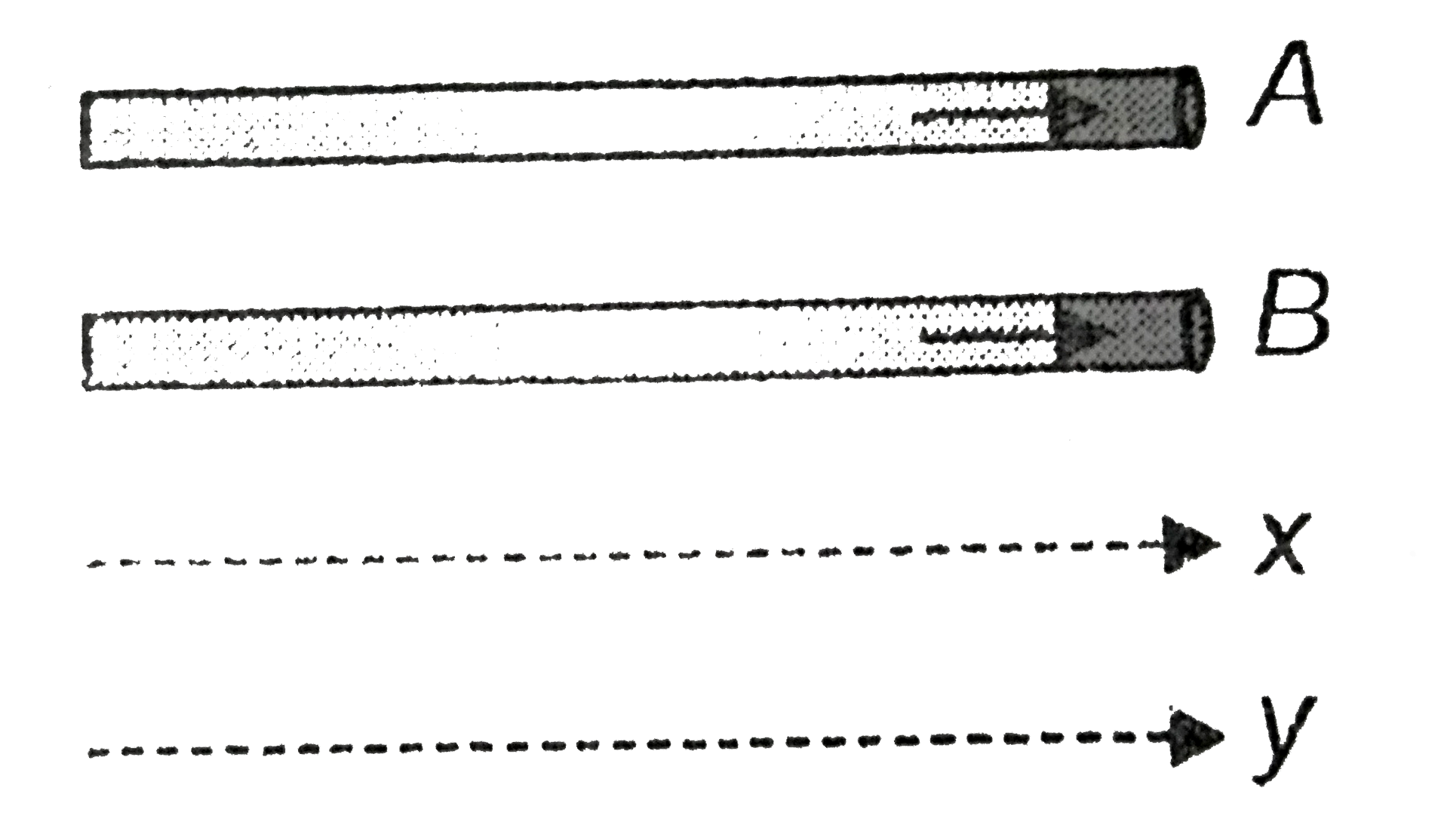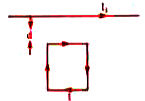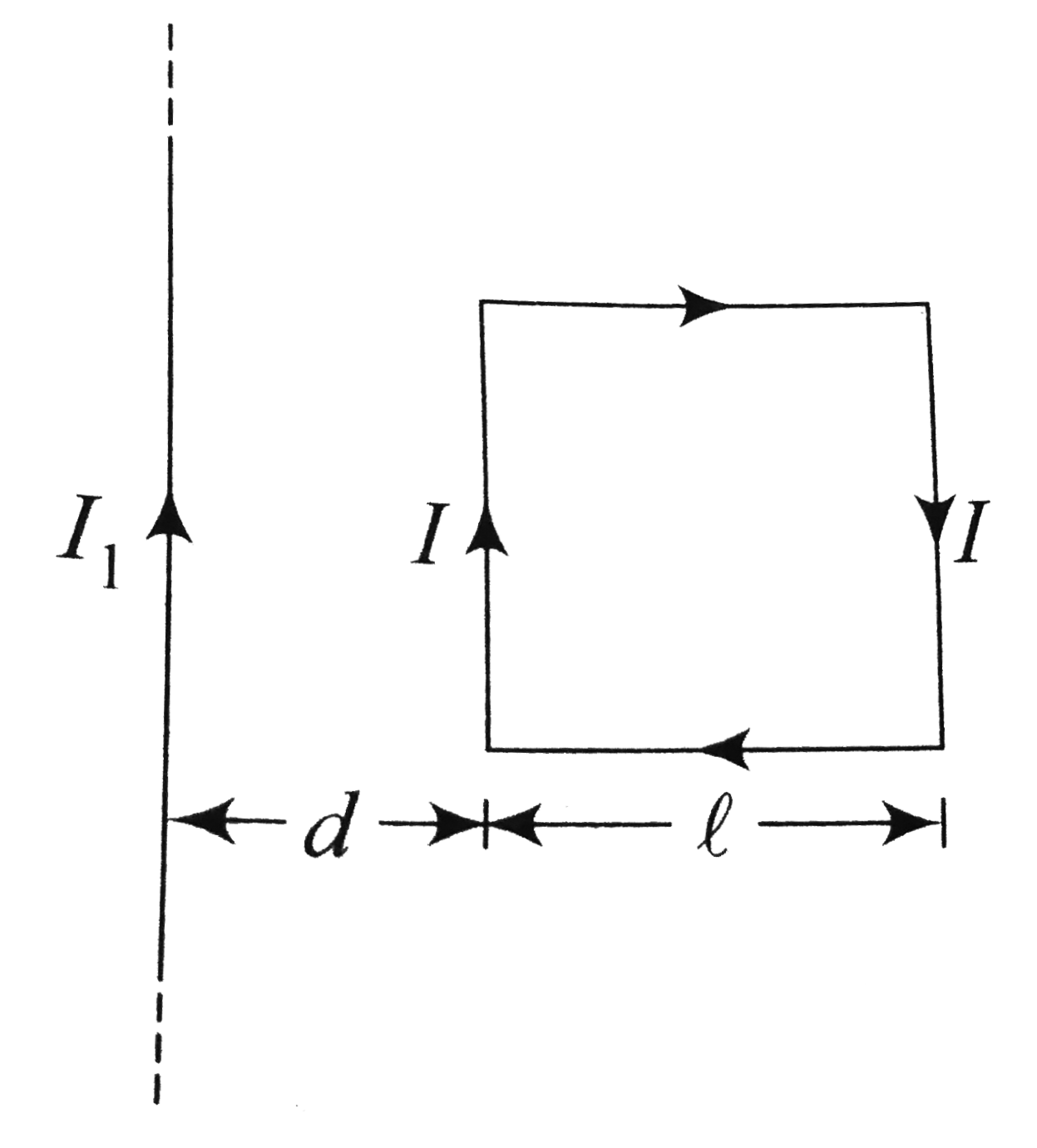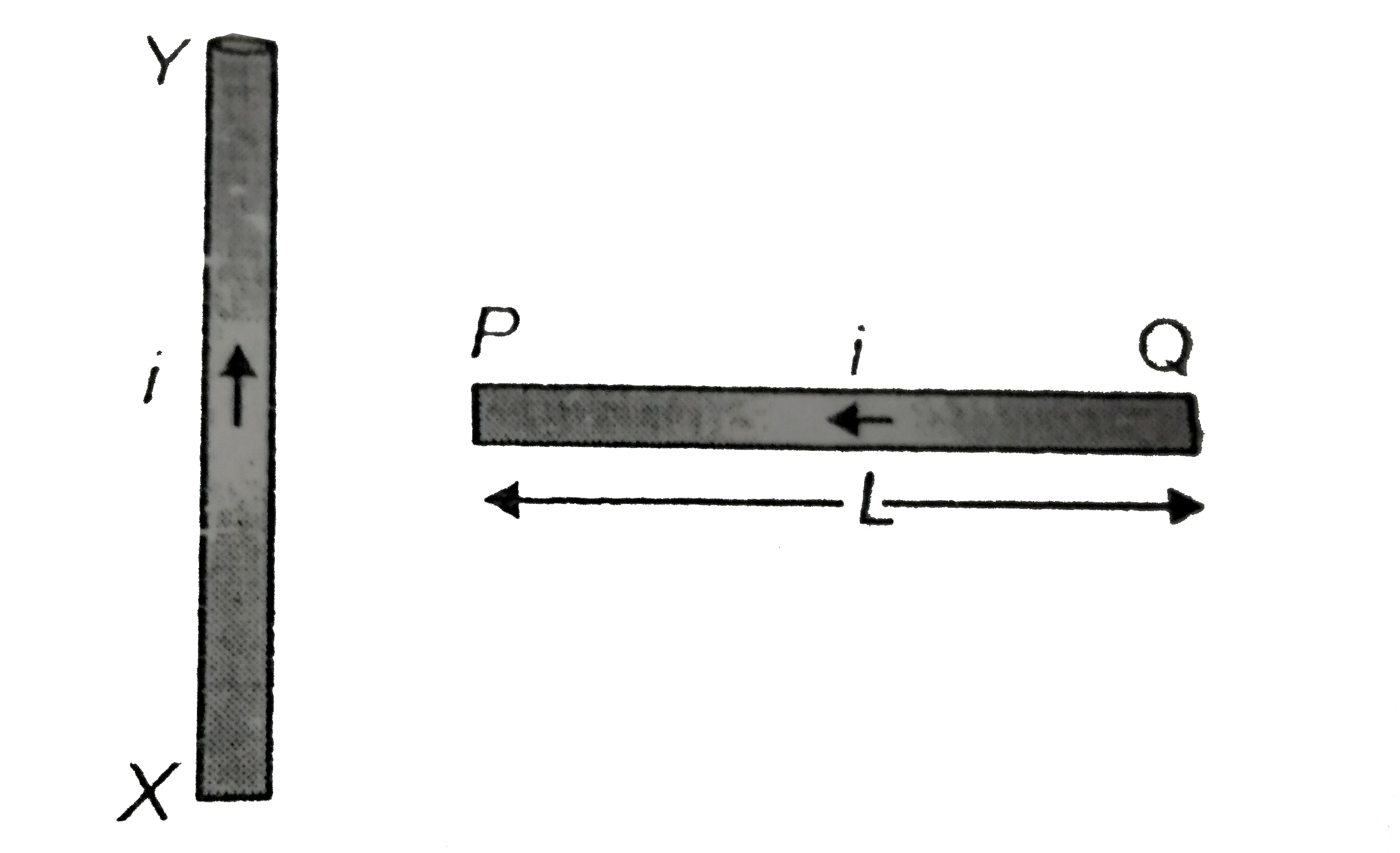An electron is ejected from the surface of a long, thick straight conductor carrying a current, initially in a direction perpendicular to the conductor. The electron will
ultimately return to the conductor
move in a circular path around the conductor
gradually move away from the conductor along a spiral
move in a helical path, with the conductor as the axis
The correct Answer is:A
To solve the problem of an electron ejected from a long, thick straight conductor carrying a current, we can follow these steps:
Step 1: Understand the Situation
The problem states that an electron is ejected from the surface of a long, thick straight conductor that carries a current. The initial direction of the electron's velocity is perpendicular to the direction of the current.
Hint: Visualize the setup: draw the conductor, the direction of the current, and the initial velocity of the electron.
Step 2: Determine the Direction of the Magnetic Field
Using the right-hand rule, we can determine the direction of the magnetic field (B) around the conductor. For a straight conductor carrying current, the magnetic field circles around the conductor.
- If the current is flowing upwards (for example), the magnetic field will be directed in a circular manner around the conductor. At the location of the electron, the magnetic field will be directed into the page (or screen).
Hint: Remember the right-hand rule: point your thumb in the direction of the current and curl your fingers around the conductor to find the direction of the magnetic field.
Step 3: Calculate the Force on the Electron
The force (F) on the electron due to the magnetic field can be calculated using the formula:
F=e⋅(v×B)
where:
- e is the charge of the electron,
- v is the velocity of the electron,
- B is the magnetic field.
Since the electron is negatively charged, the direction of the force will be opposite to the direction given by the right-hand rule.
Hint: Use the cross product to determine the direction of the force. Remember that the force on a negative charge is opposite to that calculated for a positive charge.
Step 4: Analyze the Motion of the Electron
Initially, the electron is moving perpendicular to the current and experiences a magnetic force. This force will cause the electron to move in a curved path (like a projectile) due to the magnetic field acting on it.
Hint: Think about how the force changes the direction of the electron's velocity, resulting in circular or curved motion.
Step 5: Conclusion
As the electron moves under the influence of the magnetic field, it will follow a curved trajectory and eventually return back to the conductor after traveling in a curved path.
Hint: Consider the nature of motion in a magnetic field and how charged particles behave under such conditions.
Final Answer
The electron will return to the conductor after traveling in a curved path.
The problem states that an electron is ejected from the surface of a long, thick straight conductor that carries a current. The initial direction of the electron's velocity is perpendicular to the direction of the current.
Using the right-hand rule, we can determine the direction of the magnetic field (B) around the conductor. For a straight conductor carrying current, the magnetic field circles around the conductor.
The force (F) on the electron due to the magnetic field can be calculated using the formula:
F=e⋅(v×B)
where:
- e is the charge of the electron,
- v is the velocity of the electron,
- B is the magnetic field.
Initially, the electron is moving perpendicular to the current and experiences a magnetic force. This force will cause the electron to move in a curved path (like a projectile) due to the magnetic field acting on it.
As the electron moves under the influence of the magnetic field, it will follow a curved trajectory and eventually return back to the conductor after traveling in a curved path.
The electron will return to the conductor after traveling in a curved path.
Topper's Solved these Questions
- BOOK - CENGAGE PHYSICS ENGLISHCHAPTER - SOURCES OF MAGNETIC FIELDEXERCISE - Exercise (multiple Currect )5videos
SOURCES OF MAGNETIC FIELD
- BOOK - CENGAGE PHYSICS ENGLISHCHAPTER - SOURCES OF MAGNETIC FIELDEXERCISE - Exercise (assertion-reasioning )2videos
SOURCES OF MAGNETIC FIELD
- BOOK - CENGAGE PHYSICS ENGLISHCHAPTER - SOURCES OF MAGNETIC FIELDEXERCISE - Exercise (subjective )10videos
SOURCES OF MAGNETIC FIELD
- BOOK - CENGAGE PHYSICS ENGLISHCHAPTER - RAY OPTICSEXERCISE - DPP 1.612videos
RAY OPTICS
- BOOK - CENGAGE PHYSICS ENGLISHCHAPTER - WAVE OPTICSEXERCISE - Comprehension Type14videos
WAVE OPTICS
Similar Questions
Magnetic lines of force due to a straight conductor carrying current are
View SolutionA and B are two conductors carrying a current i in the same direction x and y are two electron beams moving in the same direction. There will be
 View Solution
View SolutionA and B are two conductors carrying a currwnt i in same direction x and y are two electron beams moving in the same direction .there will be
 View Solution
View SolutionA stream of electrons is projected horizontally to the right. A straight conductor carrying a current is supported parallel to the electron steam an above it. If the current in the conductor is from left to right, what will be the effect on the electron stream?
View SolutionA stream of electrons is projected horizontally to the right. A straight conductor carrying a current is supported parallel to the electron steam and above it. If the current in the conductor is from left to right, what will be the effect on the electron stream?
View SolutionA square loop, carrying a steady current I, is placed in a horizontal plane near a long straight conductor carrying a steady current I1 at a distance d from the donductor as shown in figure. The loop will experience
 View Solution
View SolutionA square loop, carrying a steady current I, is placed in a horizontal plane near a long staright conductor carryinf a steady current I, at a distance d from the conductor as shown in Fig. The loop wil experience
 View Solution
View SolutionThe magnetic field in a straight current carrying conductor wire is:
View SolutionA conductor PQ, carrying a current i is placed perpendicular to a long conductor xy carrying a current i. The direction of force on PQ will be
 View Solution
View SolutionAB and CD are long straight conductor, distance d apart, carrying a current l. The magnetic field at the midpoint of BC is
 View Solution
View Solution

